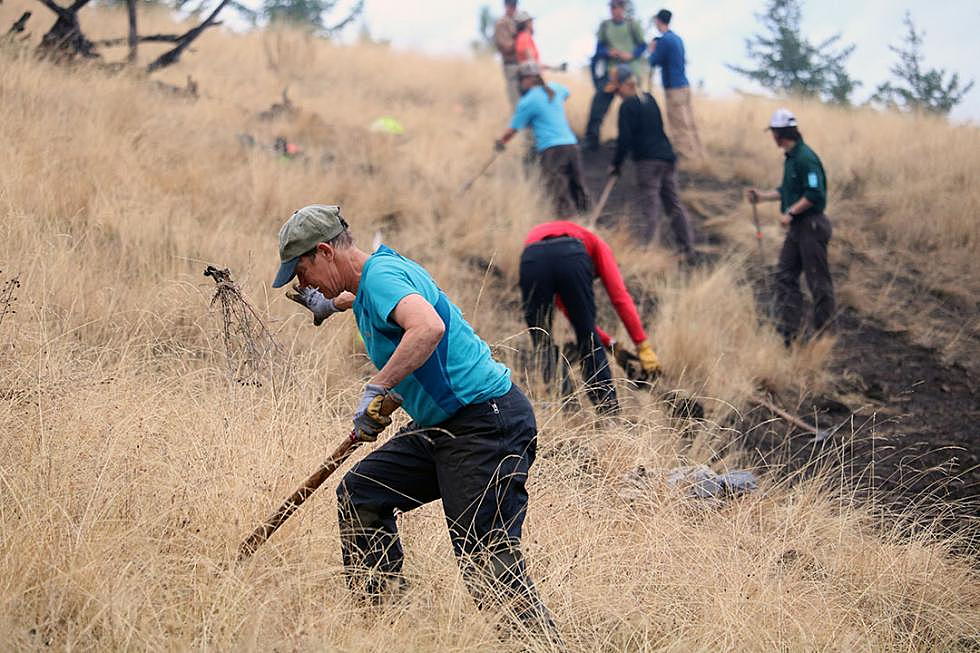
City’s lands manager seeks funding to handle growing list of projects, maintenance
Despite a prolonged fire season and a morning storm, more than 80 volunteers showed up last September to help cut a new trail across the South Hills Spur, one of the city's newest pieces of open space.
Morgan Valliant described that September day as one of the most successful volunteer events he's seen during his 25 years leading such programs in the Missoula Valley.
“We resurfaced 1.5 miles of trail, all within five hours,” Valliant said. “We're planning on doing the exact same thing for Phase Two. We've got another 1.5 miles of trail we're starting to cut, and we're rough cutting the whole thing.”
Valliant, the conservation lands manager for the Department of Parks and Recreation, detailed his program's successes and challenges in a presentation to the City Council's Land Use and Planning Committee on Wednesday.
The program manages around 4,200 acres of city property, including 650 acres of coniferous forest, 400 acres of riparian areas and 100 acres of native grasslands. Given the size of the city's holdings and the public's desire for new projects, Valliant fears the workload is quickly outpacing his staff's ability to keep up with general maintenance.
“We're going to see more and more years like this year where my crew is spending more and more time on new projects than on deferred maintenance,” Valliant said. “When I start looking at the in-house obligations we have on these new projects, probably 50 to 60 percent of my entire salary budget over the next three years will be mainly devoted to new projects.”
Already this year, that list of new projects includes the removal of Rattlesnake Dam, two new bike parks, planning for Max Wave and the development and maintenance of a park on Broadway Island.
It also includes an updated trail map, a recreation plan for the South Hills Spur, an extension of the Milwaukee Trail and the management of new open space, among other obligations.
While up to 60 percent of Valliant's budget for salaries is already earmarked for such obligations, another 15 percent is dedicated to cleaning area transient camps – something Valiant described as an ongoing challenge.
Add it all up and there's little left for the deferred maintenance of the city's conservation lands.
“I'm a little worried for the first time in a while,” said Valliant. “It's time to start looking at maintenance funding to keep moving forward with all the good work we've done for habitat restoration and trail maintenance, or we're going to see more habitat degradation, trail degradation and more deferred maintenance costs on our infrastructure.”
The conservation lands budget has increased from $253,000 in 2008 to $432,600 in 2017, according to Valliant. Last year, it also landed $149,000 in grants, making it the second best grant year on record.
But with the list of new projects growing longer, Valliant estimates that another $160,000 is needed to address deferred maintenance.
“That's a lot, but that would basically get us to where we need to be according to the Conservation Lands Management Plan,” he said. “It would fund the maintenance of all the new projects known and implemented right now. Not the ones in planning phase, but the ones we know will start this year as far as groundbreaking and construction.”
The City Council will handle all budget requests later this year as it begins to draft its Fiscal Year 2019 budget.
